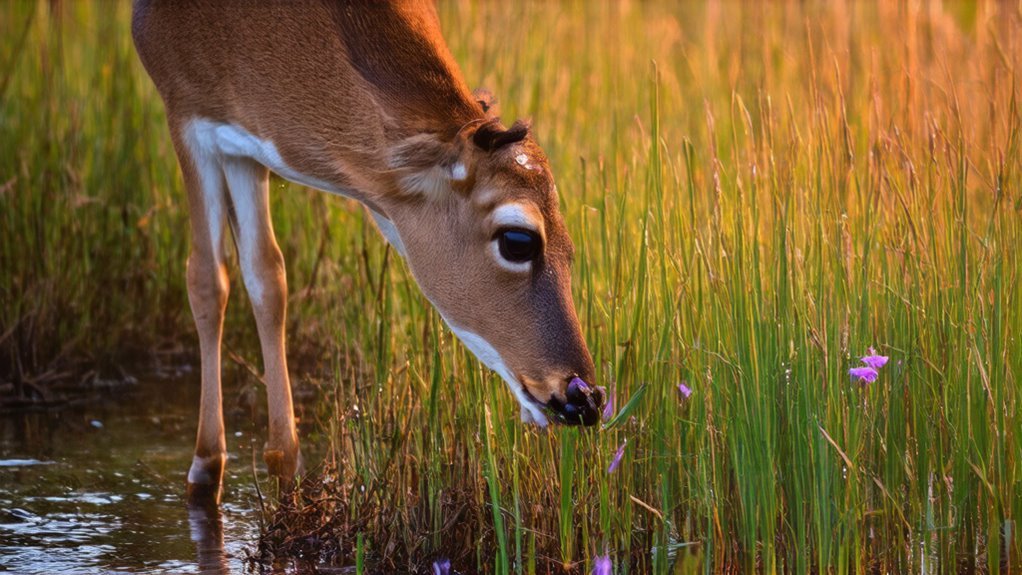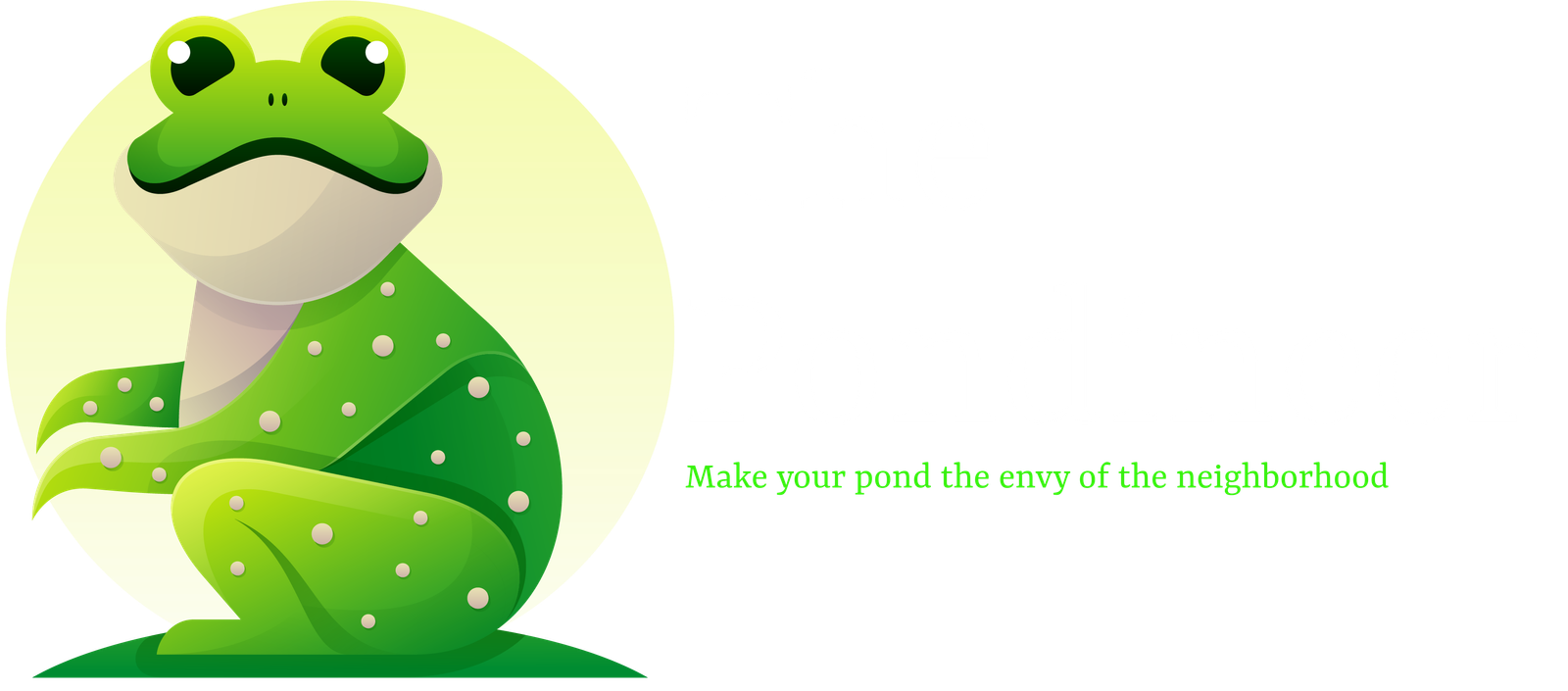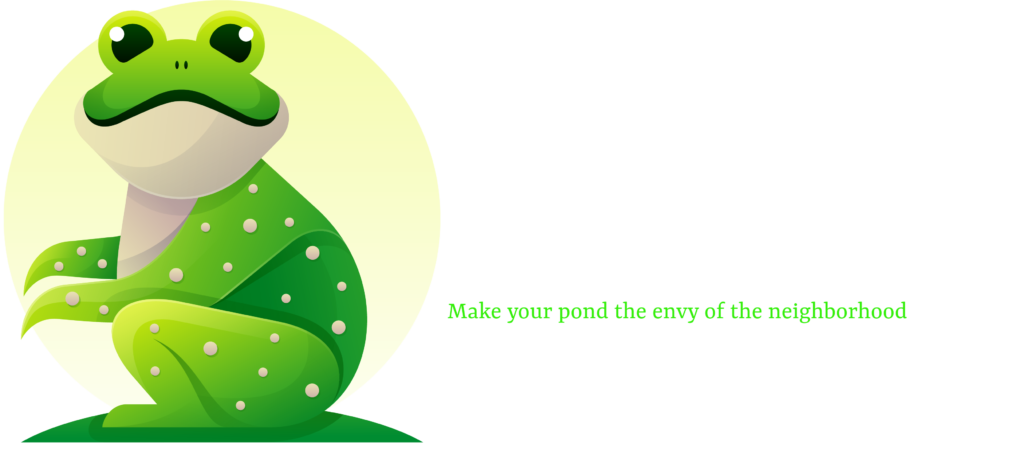Swamp food chains might seem murky, but they’re actually pretty cool once you get to know them. You know how your backyard pond needs that perfect balance? Well, swamps work the same way. So, plants soak up sunlight, little critters munch on plants, and bigger animals hunt the smaller ones. Can you imagine what happens when one link breaks? Nature’s maintenance crew—the decomposers—keeps everything running smoothly behind the scenes. But what really determines which creatures thrive and which don’t?
The Mysterious World of Swamp Ecosystems

When you think about swamps, your mind probably conjures up images of murky waters and mysterious creatures lurking beneath the surface.
Well, beyond the swamp myths of dangerous, impenetrable wetlands lies an ecosystem teeming with life and remarkable biodiversity significance.
You won’t believe this, but swamps host everything from microscopic algae to massive alligators, each playing a crucial role in this balanced environment.
So, next time you’re planning to visit a swamp, remember to wear protective clothing – those mosquitoes mean business!
Can you imagine the complex relationships forming right under that peaceful surface?
Solar Power: How Producers Fuel the Swamp

Life in a swamp begins with sunlight—the ultimate energy source that powers the entire ecosystem. You won’t believe this, but those swamp plants are like tiny solar panels, capturing light and turning it into food through photosynthesis process.
| Producer Type | Example | Energy Conversion | Importance |
|---|---|---|---|
| Trees | Bald Cypress | High oxygen output | Canopy habitat |
| Aquatic Plants | Soft Rush | Moderate efficiency | Water filtration |
| Algae | Green Algae | Rapid conversion | Fish food source |
| Phytoplankton | Diatoms | Microscopic powerhouse | Base of food web |
Additionally, incorporating native plants into the swamp ecosystem enhances its overall health by promoting biodiversity and supporting various species.
The Grazing Gallery: Primary Consumers in Wetlands

After producers convert solar energy into usable nutrients, primary consumers enter the scene as nature’s dedicated grazers of the wetland world.
These herbivores form the critical second tier of the swamp food chain, transforming plant matter into animal protein.
- Muskrat behavior includes building lodges from vegetation and creating “eat-outs” where their grazing opens waterways.
- Freshwater mussels filter gallons of water daily, cleaning as they consume.
- Crayfish scavenge fallen plant debris, breaking down larger pieces.
- Tadpoles graze on algae, controlling excessive growth.
Additionally, riffle beetles contribute to the ecosystem by aiding in the breakdown of organic material and maintaining water quality.
Predatory Pathways: Secondary Consumers and Their Hunting Strategies
Who serves as the next link in our swamp’s intricate food web?
Secondary consumers step up to the plate, hunting down those plant-eaters with impressive skill.
You won’t believe this, but these predators have developed some seriously clever hunting techniques!
Herons stand perfectly still before striking lightning-fast at fish, while snakes use their heat-sensing pits for precise prey selection in murky waters.
Kings of the Marsh: Apex Predators and Population Control
At the top of our swamp’s food chain, apex predators reign supreme with undeniable authority.
These magnificent creatures maintain the delicate balance through complex predator prey dynamics.
You know what’s fascinating about apex behavior? These kings keep everything in check:
- Bull sharks cruising through brackish waters
- Burmese pythons silently constricting their prey
- American alligators patrolling with those watchful eyes
- Bald eagles swooping down with precision
Nature’s Recyclers: The Critical Role of Decomposers
While apex predators get all the spotlight in our swamp ecosystem, the true unsung heroes work quietly beneath our feet.
These decomposers—fungi, bacteria, and tiny invertebrates—break down dead plants and animals into nutrients that feed the entire food web.
You won’t believe this, but a single handful of swamp soil contains millions of these microscopic recyclers!
The decomposer diversity in healthy swamps is mind-blowing.
So, next time you’re thinking about your pond maintenance, remember that nutrient cycling depends on these little guys.
Can you imagine that? Without decomposers, our swamps would literally drown in their own waste! Consistent water quality monitoring is essential for maintaining the health of these ecosystems.
Ecological Balance: When Food Chains Shift in Swamps
When ecological balance shifts in a swamp ecosystem, the ripple effects can be dramatic and far-reaching.
You know how we always talk about keeping your pond balanced? Well, swamps work the same way—except on a massive scale!
- Invasive species like Burmese pythons disrupting native predator-prey relationships
- Seasonal changes forcing omnivores to adjust their diets
- Human activity altering habitat availability and species interactions
- Natural disasters creating ecological shifts in predator populations
Frequently Asked Questions
How Do Seasonal Changes Affect Swamp Food Chains?
Dramatic seasonal fluctuations transform swamp food chains dramatically. Water levels change, triggering seasonal migration of species and altering predator-prey relationships, while affecting nutrient cycling through varying decomposition rates throughout the year.
Can Swamp Ecosystems Recover After Invasive Species Introduction?
Swamp ecosystems can recover from invasive species impact, though full restoration depends on ecosystem resilience, native species adaptability, and whether management interventions effectively mitigate ecological disruptions before critical thresholds are crossed.
How Do Pollution and Toxins Accumulate in Swamp Food Chains?
Silently and insidiously, toxic bioaccumulation transforms swamps into danger zones. Pollutants enter through producers, magnifying through each consumer level, ultimately reaching dangerous concentrations in apex predators through pollutant transfer.
What Symbiotic Relationships Exist Between Swamp Species?
Swamp ecosystems feature numerous mutualistic interactions, like alligators hosting cleaning birds, and parasitic relationships, such as leeches feeding on vertebrates, creating interdependent webs essential for ecological functioning.
How Do Human Activities Disrupt Swamp Trophic Dynamics?
Human activities disrupt swamp trophic dynamics through habitat destruction, which eliminates niches, and nutrient depletion, altering energy flow between producers, consumers, and decomposers, thereby destabilizing the entire ecosystem.

